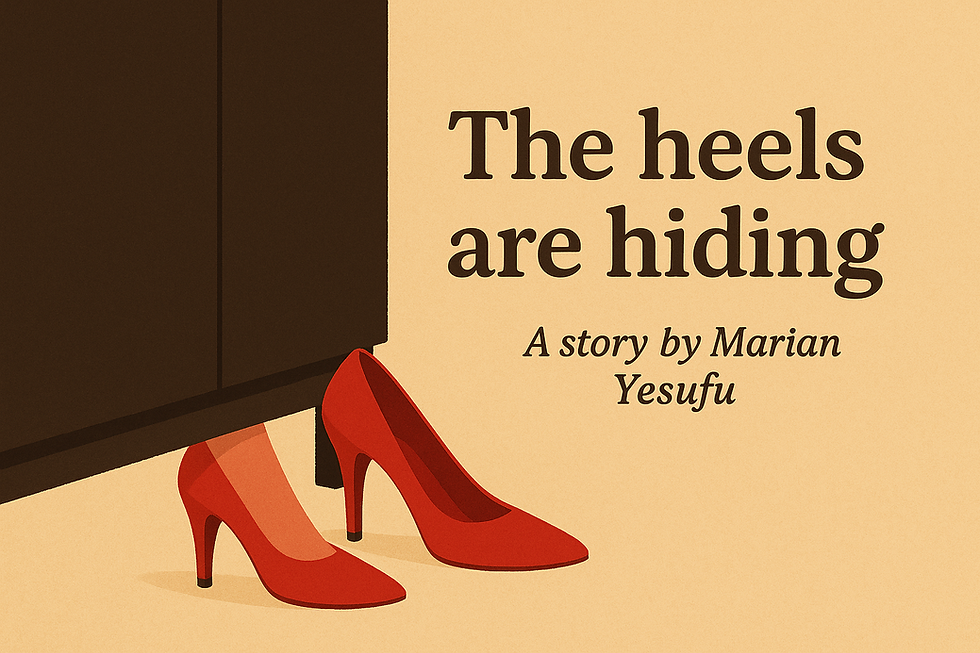
Finding your Voice through Improv
- Black Women in Comedy Festival

- Jul 8
- 3 min read
Finding your Voice through Improv
Presented by. Marian Adewunmi Yesufu
ABSTRACT: Make no mistake, everyone will be actively improvising during this presentation. As marginalized individuals, we are often conditioned—both externally and internally—to believe that our voices don’t matter. We’re told, in subtle and overt ways, that we should shrink, code-switch, or disappear. But what happens when we step into the liberating space of musical improv? When we allow ourselves to sit in the meditation of comedy, movement, rhythm, and wordplay? Musical improv becomes more than just performance—it becomes ritual, reclamation, and resistance. Through spontaneous creation, we explore the deep, embodied work of uprooting internalized oppression. We move, we sing, we laugh—and in doing so, we rewrite the narrative. Improv has long been a magical tool for radical healing, offering us the space to play, to feel joy, and to finally hear ourselves clearly. This is not just performance. This is healing in motion.

Purpose: Build safety and invite presence.
Why it matters: Psychological safety and communal rituals are essential for unlocking creativity and fostering vulnerability (Brown, 2018).
Citation:
Brown, B. (2018). Dare to lead: Brave work. Tough conversations. Whole hearts. Random House.

Intro to the Power of Improv (Mini-Talk) Main Ideas:
Marginalized individuals often internalize silence.
Improv, especially musical, engages the body and spirit to reclaim voice.
Theoretical framing:
bell hooks speaks of voice as a site of resistance (hooks, 1990).
Boal describes performance as a weapon of liberation (Boal, 2000).
Citations:
hooks, b. (1990). Yearning: Race, gender, and cultural politics. South End Press.
Boal, A. (2000). Theater of the oppressed. Pluto Press.

Warm-Up Games (Body + Voice) Exercises:
Many Mumbling Mice – tongue dexterity + confidence
Tat Tat Tat Tat Tat Ta Ta – rhythm and release
These Are 5 Things – thought-to-speech flexibility
Embodiment Theory: Play and vocal expression enhance cognitive-emotional regulation, especially in trauma-informed spaces (Van der Kolk, 2014).
Citation:
van der Kolk, B. A. (2014). The body keeps the score: Brain, mind, and body in the healing of trauma. Viking.

Musical Improv Jam Activities:
Call & Response Song Circle
Emotional Status Song
Group Song Creation Game
Purpose: Builds creative risk-taking and relational trust (Nachmanovitch, 1990).
Cultural Relevance: Improvised music is rooted in Black diasporic traditions of call and response, collective voice, and sonic protest (Baraka, 1963; Moten, 2003).
Citations:
Nachmanovitch, S. (1990). Free play: Improvisation in life and art. Tarcher.
Baraka, A. (1963). Blues people: Negro music in white America. William Morrow.
Moten, F. (2003). In the break: The aesthetics of the Black radical tradition. University of Minnesota Press.



Purpose: Create space for individual power and community validation.
Relevance: Performance as personal narrative builds self-efficacy and audience connection (Alexander, 2005).
Citation:
Alexander, B. K. (2005). Performance ethnography: The re-enactment of everyday life. In N. K. Denzin & Y. S. Lincoln (Eds.), The Sage handbook of qualitative research (3rd ed., pp. 411–442). Sage Publications.

Group Discussion Prompts:
What surprised you?
How did it feel to sing your truth?
Where can you carry this work?
Final chant (call and response): “This is my voice! I will not shrink! I take up space! I sing, I soar!”
Grounding in Practice: Communal affirmations and closing rituals promote embodied healing and collective resilience (Ginwright, 2016).
Citation:
Ginwright, S. (2016). Hope and healing in urban education: How urban activists and teachers are reclaiming matters of the heart. Routledge.




Comments